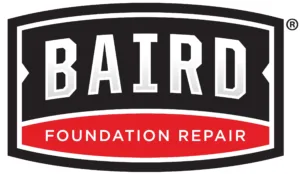
How Seasonal Changes Impact Your Concrete Slab Foundation
Understanding Concrete Slab Foundation Issues
When it comes to home foundations, one might think a material as strong as concrete should prevent any problems down the road. Unfortunately, a concrete slab foundation is not immune to problems — especially in areas like Texas with severe weather changes.
At Baird Foundation Repair, we specialize in addressing the unique foundation issues that homeowners in San Antonio, Corpus Christi, Houston and Austin frequently face. Our approach combines industry-leading expertise with local insight, ensuring your home’s foundation maintains its strength and stability through every season.
Whether you’re dealing with a shifting house or a settling concrete slab, our team is equipped to provide effective and lasting foundation solutions.
The Impact Of Seasonal Changes On Foundations
How can seasonal changes impact your concrete slab foundation? By affecting the soil underneath it. If a home is built on expansive soil, movement is inevitable.
During seasons of heavy rainfall, the soil will expand, pushing on the structure itself. In periods of extreme drought or when the ground dries out, the soil will shrink, crack and cause the structure to move again.
The result of all this movement is foundation damage that manifests in the form of cracked walls or floors, doors and windows that don’t shut properly, sloping or buckling floors and other telltale signs.
Repairing A Concrete Slab Foundation In Need
What can you do if extreme conditions have left your concrete slab foundation in need of repair? The answer is to transfer the weight of the structure from unstable soil to more competent levels. This is best accomplished with either push pier or slab pier systems.
Push Pier Systems For Foundation Stabilization
Push piers are hydraulically pushed through heavy-duty steel brackets, one by one, until they reach a competent soil level. Then the weight of the structure is evenly distributed across all the piers, and the foundation is stabilized permanently.
Slab Piers: An Effective Foundation Solution
A minimally invasive solution for slab foundation issues is slab piers. This technology is designed to stabilize and lift concrete slab foundations that have experienced settling or cracking.
These piers are long, steel columns that are driven deep into the ground beneath the slab until they reach a more stable soil layer or bedrock. This process ensures that the foundation’s weight is supported by the piers, rather than the unstable soil that caused the settling.
Both push piers and slab piers are minimally invasive, offering a practical solution to foundation problems without major disruption to your property.
Turn To Baird Foundation Repair
Understanding the complexities of foundation issues — such as shifting and settling — is crucial for maintaining the integrity of your home. Baird Foundation Repair offers expert solutions to address these challenges effectively.
Our experienced team uses advanced techniques like push pier and slab pier systems, ensuring your foundation is secure and your home remains safe and stable. If you’ve noticed any signs of foundation problems, don’t wait for them to worsen.
Contact Baird Foundation Repair today for a thorough inspection and the best in foundation repair services. Trust us to keep your home on solid ground.
expansive soil , foundation , helical pier , minimally invasive , push pier
